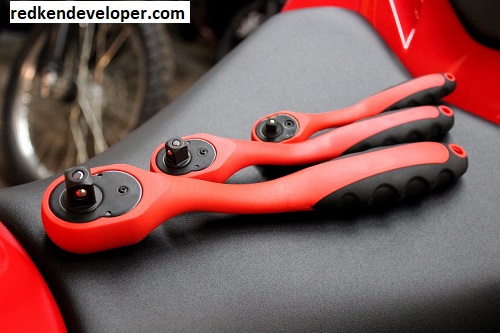Procter & Gamble Swiffer Product Development: Research, Focus Groups, and Innovation
Development:
Development Procter & Gamble (P&G) is one of the world’s leading consumer goods companies famous for. The development of new products that satisfy the daily needs of consumers. Among its most successful and widely recognized brands, Procter & Gamble boasts Swiffer, which changed the face of house cleaning significantly with ease of use and effectiveness.

Such simple household items as dry and wet mops, dusters, and an endless variety of refills by Swiffer are now part of the American lexicon. The story of these products’ development makes for a fantastic case history of how product development, and consumer research. And the use of focus groups can lead to a successful line of products. This article will outline what Procter & Gamble researched, used focus groups for, and innovated while trying to discover Swiffer products. It completely changed how consumers would clean their homes.
The Genesis of Swiffer: Addressing Consumer Pain Points:
Development:
While the history of Swiffer will be discussed in depth regarding its product development, one thing has to be mentioned and that’s the consumer-centric approach P&G has taken since the onset.
Procter & Gamble was troubled by a hole in the market of home cleaning in the late 1990s. Consumers were extremely dissatisfied with the old methods of cleaning—especially sweeping and mopping. The old mops were cumbersome, tough to handle, and simply didn’t remove dirt and dust effectively. Disposable dusting cloths were helpful but not an all-around solution for cleaning floors.
P&G realized the necessity of creating a cleaning product that was simpler to use and made the work easier and more efficient. The firm had to imagine a product that was easy to use in such a way that it was not making any demand on the user. It also should have a better cleaning performance as compared to other cleaning products in the market. It should not be expensive and therefore should not provide a strain on a family budget. This developed the thought within P&G that resulted in Swiffer-one of the best-known brands by P&G.
Research and Consumer Insights: Knowing the Needs of the Market:
Development:
The initial phase of the new product development process involved extensive research regarding consumers. As has been a traditional component of new product development at P&G, the company approached this task by relying heavily on understanding consumer pain points and needs through qualitative and quantitative research methods.
2.1. Cleaning Pain Points Identification:
The management conducted focus groups, in-home interviews, and field research to understand the way consumers cleaned and the problems they faced. Through these studies, Procter & Gamble discovered the following important points:
- Time and Effort: Traditional mops and brooms involved several steps in terms of time and effort down, rinsing, and wringing out the mop. This time-consuming and laborious process wished for something easy and quicker.
- Effectiveness: Maximum customers were not pleased with the performance of traditional mops and brooms because they could not gather finer dust, dirt, and pet hair.
- Hygiene: Hygiene and cleanliness were indeed the prime thoughts in many customers’ minds. They wanted it to clean the surfaces but nuke the germs and bacteria from the surface as well more effectively.
- Disposable Convenience: There was a rising demand for disposable cleaning products, wherein these cleaning issues can be hygienic and mess-free without the need to clean up or sanitize the mop head.
This challenge gave birth to the Swiffer product idea it is a lightweight and disposable cleaning system that is easy to use but with great efficiency.
2.2. Focus Groups: Testing Product Ideas:
One would find out where consumers stand and feel the pain once P&G was aware of the pain points of consumers, and then they used the focus group to test product ideas. They felt that these people would be eager to try out new things if those ideas matched their needs and could fit their target.
The focus groups were very diversified, consisting of family households, single professionals, and elderly groups. It was an attempt to understand the emotional and psychological needs through the cleaning process as well as functional needs. P&G wants to know:
What makes a consumer want to clean?
Development:
People had how many feelings about the non-reusable cleaning products?
- Key Response to Focus Groups led to the final design of Swiffer.
- Respondents of focus groups wanted a mop that was easy to maneuver, didn’t require a bucket or water, and be used both wet and dry.
- It translated this user feedback directly into a modular design: the ability to easily change the dry sweeping cloth and to mop with a different, wet cloth. The idea of having a clean, virtually weightless cleaning system that allows to use of disposable pads shocked most of the participants and the product idea was confirmed even at its first stage.
2.3. Prototyping and Refinement:
After P&G came up with a prototype of the Swiffer mop that worked, it followed with user trials. This involved shipping out prototypes to consumers who were thereby requested to use the product in their homes and provide performance, ease of use, and satisfaction. This process would then allow the product development team within P&G to hone in on the design and make sure that the product was meeting consumer expectations.

At this point, the Swiffer mop design was developed and redeveloped several times. P&G paid much attention to ergonomic improvements in the ergonomics, size, and shape of the handle and attachment of the disposable cloths. They tested the cleaning performance of the product on several floor types, such as hardwood, tile, and laminate for versatility in Swiffer.
Focus Groups and Product Iterations:
Development:
Probably the most important aspect of the process of new product development was the use of ongoing focus groups throughout the design as well as the post-launch phases of the Swiffer. Even after the new product was launched into the market, P&G continued to gather feedback from its consumers to make improvements to the product and later introduce new versions of the same.
For instance, early focus group research suggested that while consumers liked the dry sweeping cloths of Swiffer, they wanted to have an easier means for wet mopping. Swiffer WetJet was designed, that is a mop, that integrated the wet convenience of the disposable cleaning cloths of Swiffer with an integrated cleaning solution and sprayer.
Swiffer WetJet also succeeded because it had continuous input from the focus group, which would have loved to have a mop that could clean and disinfect floors without additional cleaning products or a complicated setup. The WetJet mop met these requirements with a ready-to-use solution, even making it easier for consumers to clean fast and efficiently in their homes.
Market Testing and Launch:
Development:
Once the Swiffer product was assembled, P&G had its first test marketed in a controlled market before finally launching it nationwide. This “test market” phase helped the company see how the product would work well and obtain a realistic sense of consumer opinions.
Outside of running focus groups, P&G also followed up on reports of sales data, consumer responses, and even social media input about the product. It used this data to shape and change its marketing strategy and even changes in the product. For instance, based on results from test markets after the release of Swiffer, P&G determined consumers were waiting for something that could be used to reach inaccessible parts like baseboards and corners, which led to Swiffer Dusters and Swiffer Sweeper.
Impact on Cleaning Industr Swiffer:
Development:
In the market, when Swiffer was launched, it had a much-needed impact on the cleaning industry. It brought a new mode of cleaning to consumers speedy, effective, and hassle-free process.
- Consumer Acceptance: Swiffer products soon became a household name as consumers appreciated the convenience and the effectiveness of cleaning with this product. Disposable cloths were always used because they could trap dirt and dust more effectively than regular mops even without observing how busy a household is or how much time an individual has to clean.
- Competitor Response: The success of Swiffer triggered several competitors who would develop their competing products, but Swiffer continued to hold its strength because of brand recognition and constant innovation.
- Sustainable Initiatives: P&G has made many over the years to increase the sustainability of the product line of Swiffer. For example, the company is trying to make disposable clothes more eco-friendly, reducing the impact on the environment as well as its contribution during the production process.
FAQs:
Development:
Q1. What was the original consumer insight that drove the development of Swiffer?
A1. The original consumer insight was that traditional cleaning methods like mopping or sweeping were clumsy, time-consuming, and didn’t get the job done in removing fine dust and dirt. Consumers needed something more efficient and convenient to clean their homes.
Q2. How was focus group input critical to the design of Swiffer?
A2: Focus groups were essential in validating the concept of the product and realizing the features consumers wanted. They came up with the design of the Swiffer mop to make it light so that it could be maneuvered easily in straight lines, yet very powerful for cleaning floors without a bucket and water.
Q3: How has Swiffer evolved since it was introduced?
A3: Swiffer launches in the first wave with WetJet, Dusters, and Sweepers additions. Continuous consumer feedback and focus group research influenced product improvements, such as cleaning performance, ergonomics, and sustainability.

Q4: What research methods did P&G utilize to create Swiffer?
A4: Development used consumer research methods like in-home interviews, field research, focus groups, user trials, and prototype testing. All the above research methods enabled the company to gain valuable insights into consumer needs and wants.
Q5: What did P&G do to ensure Swiffer was effective on various types of floors?
A5: Development In its process of developing its product, P&G tried Swiffer on various types of flooring, such as